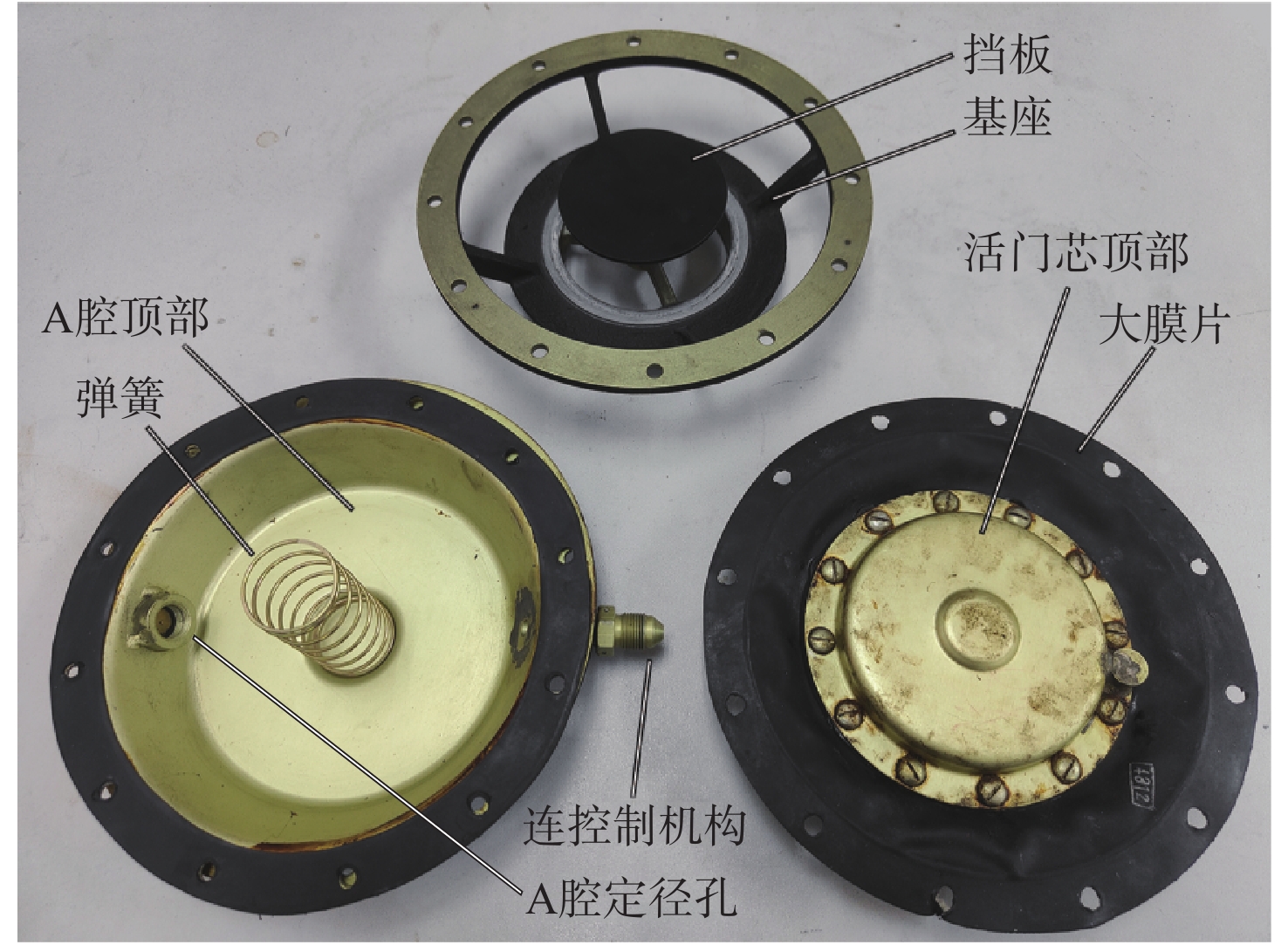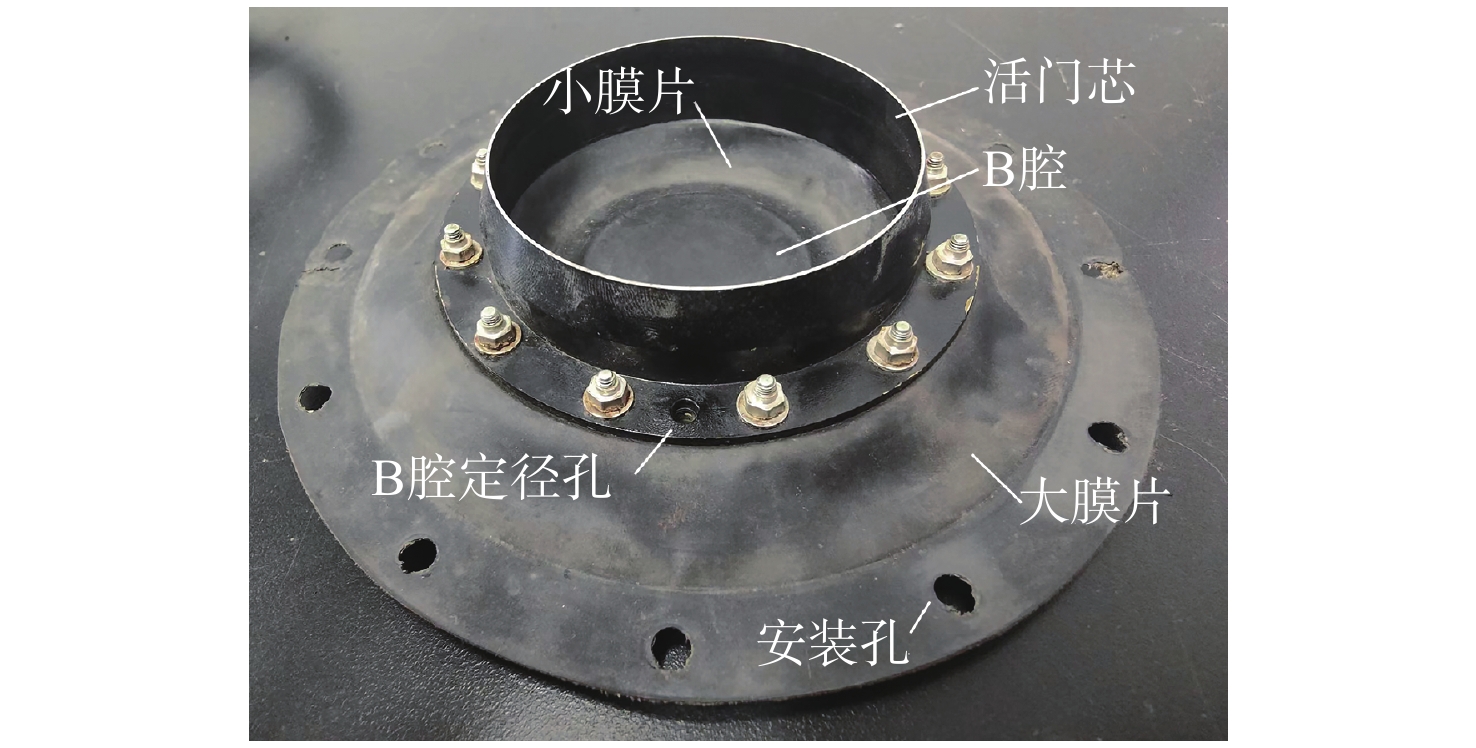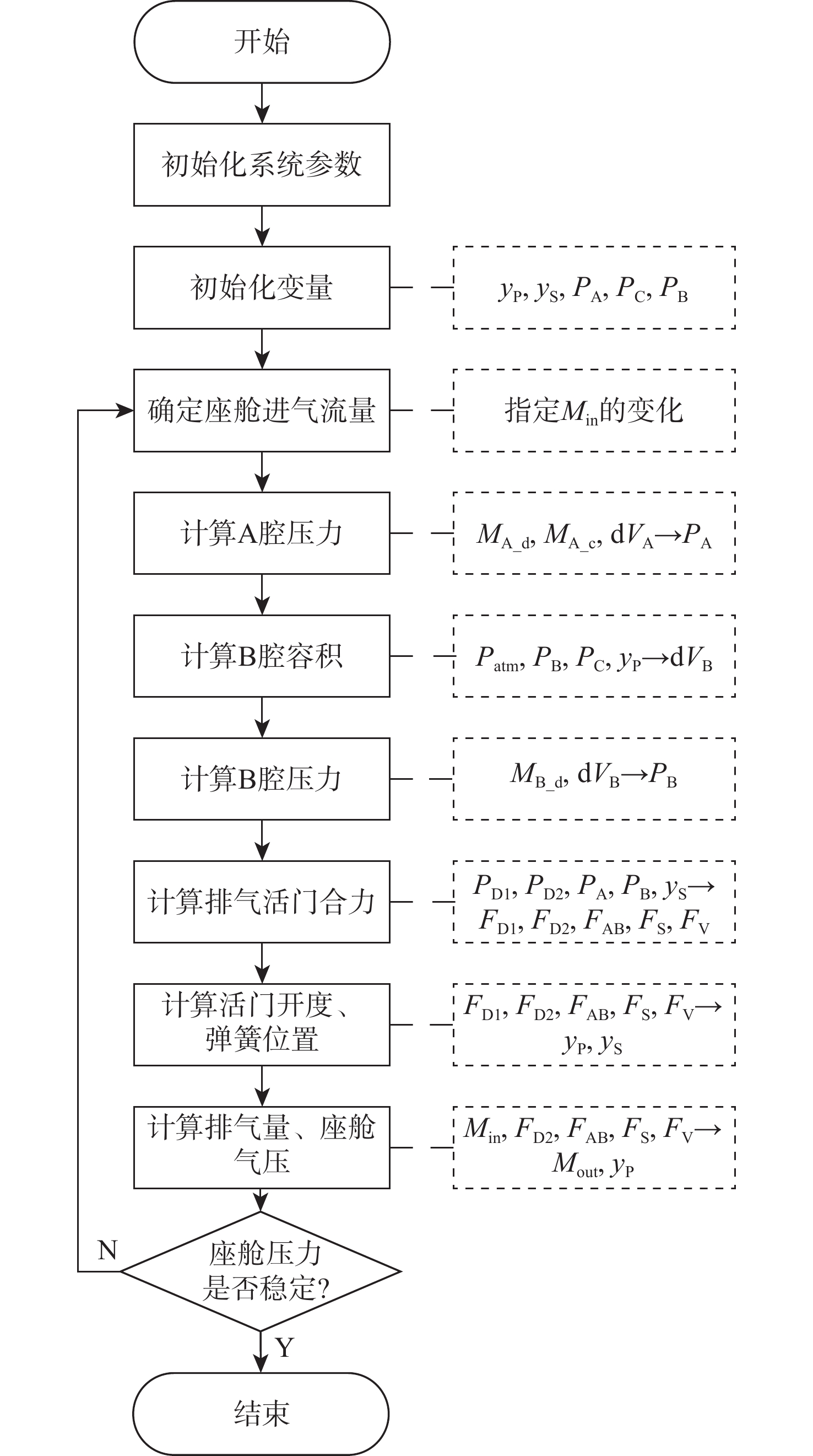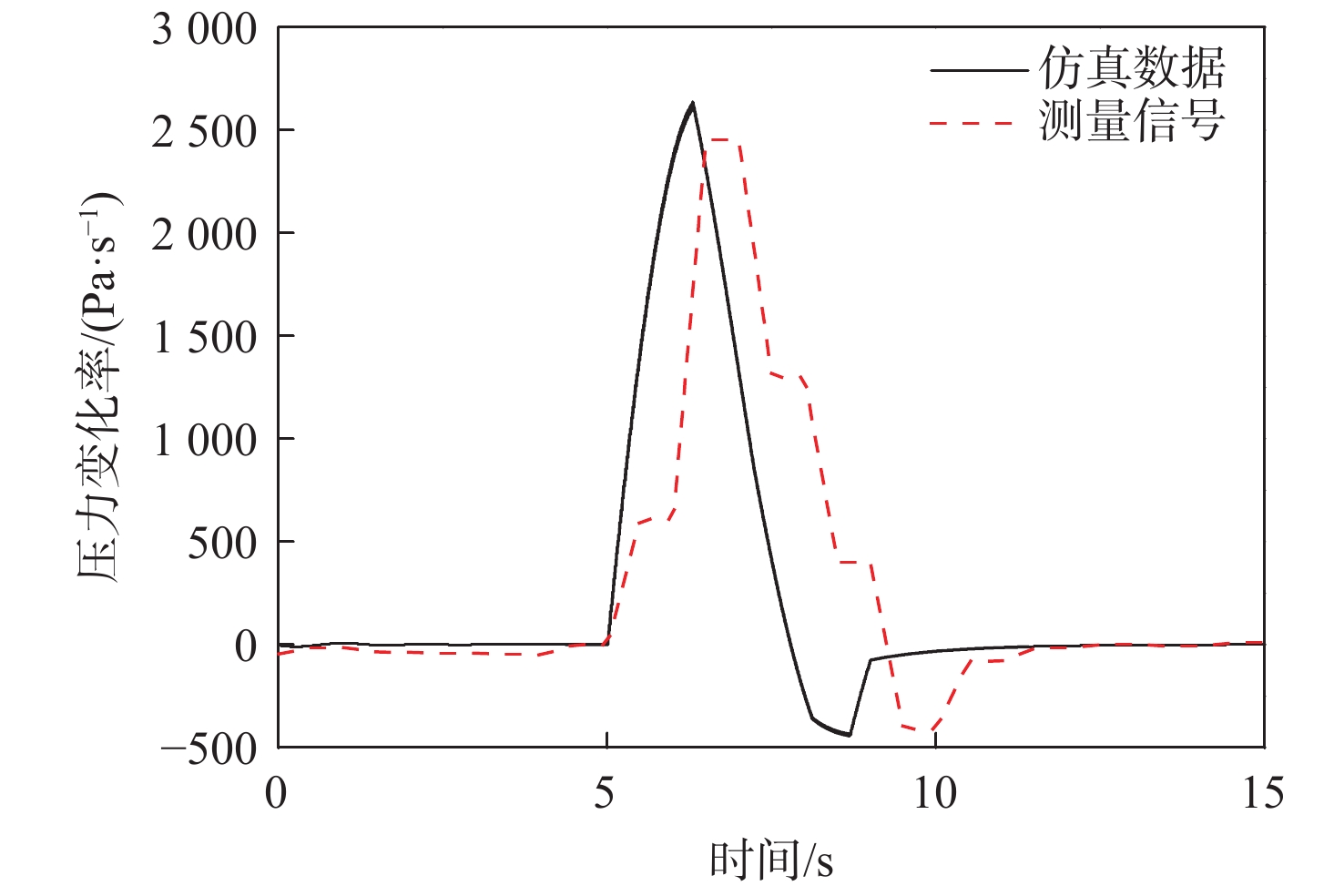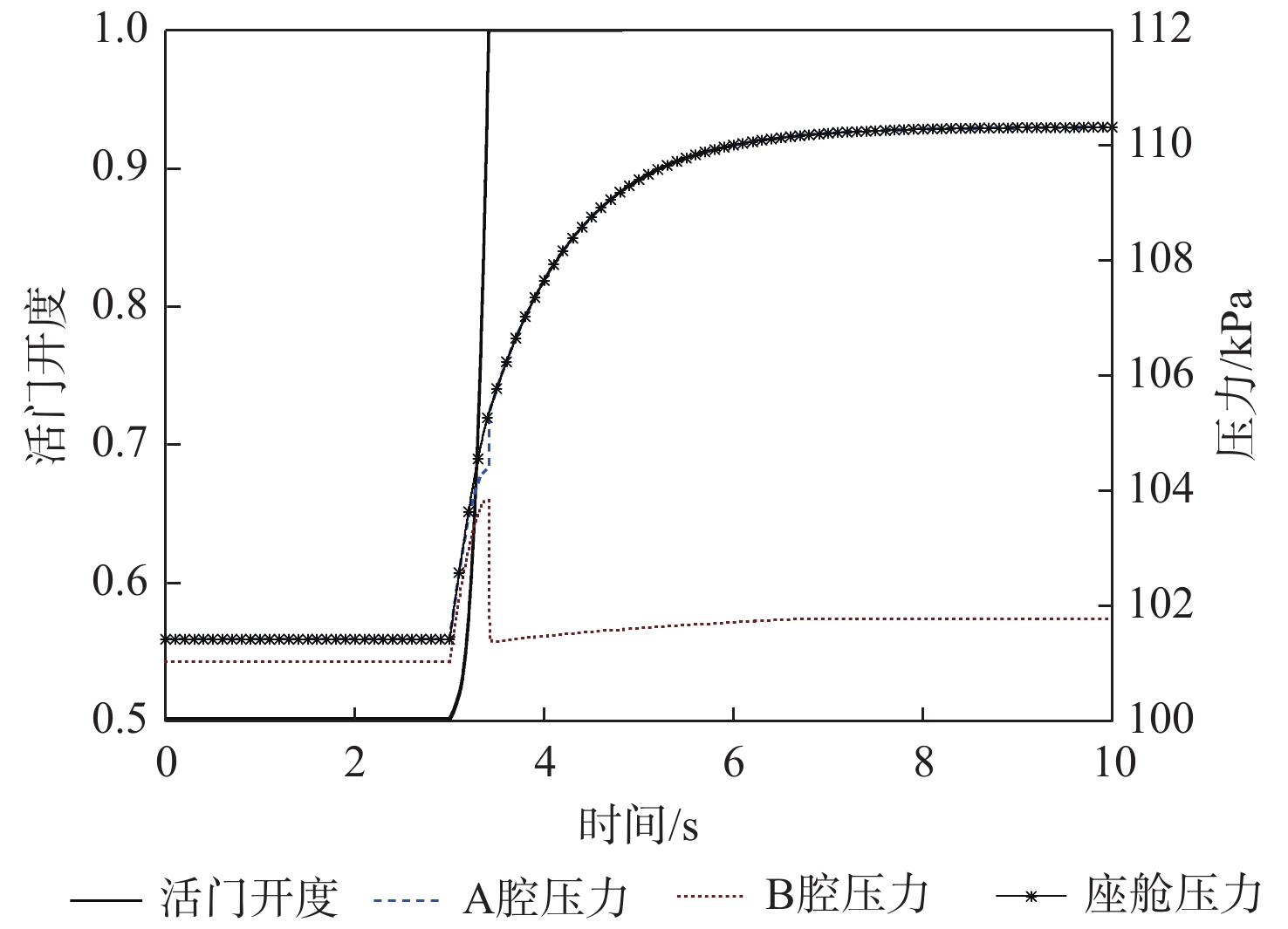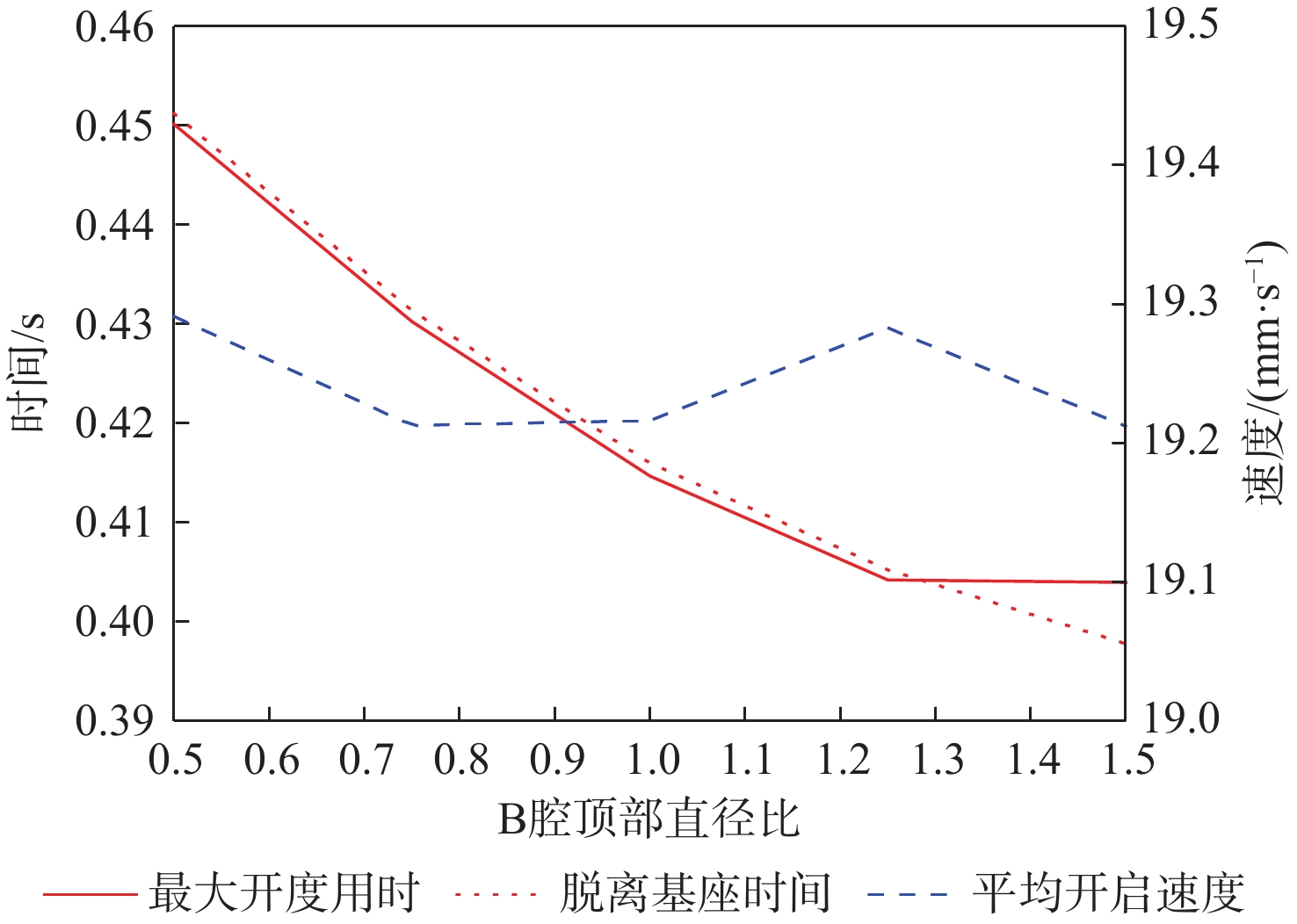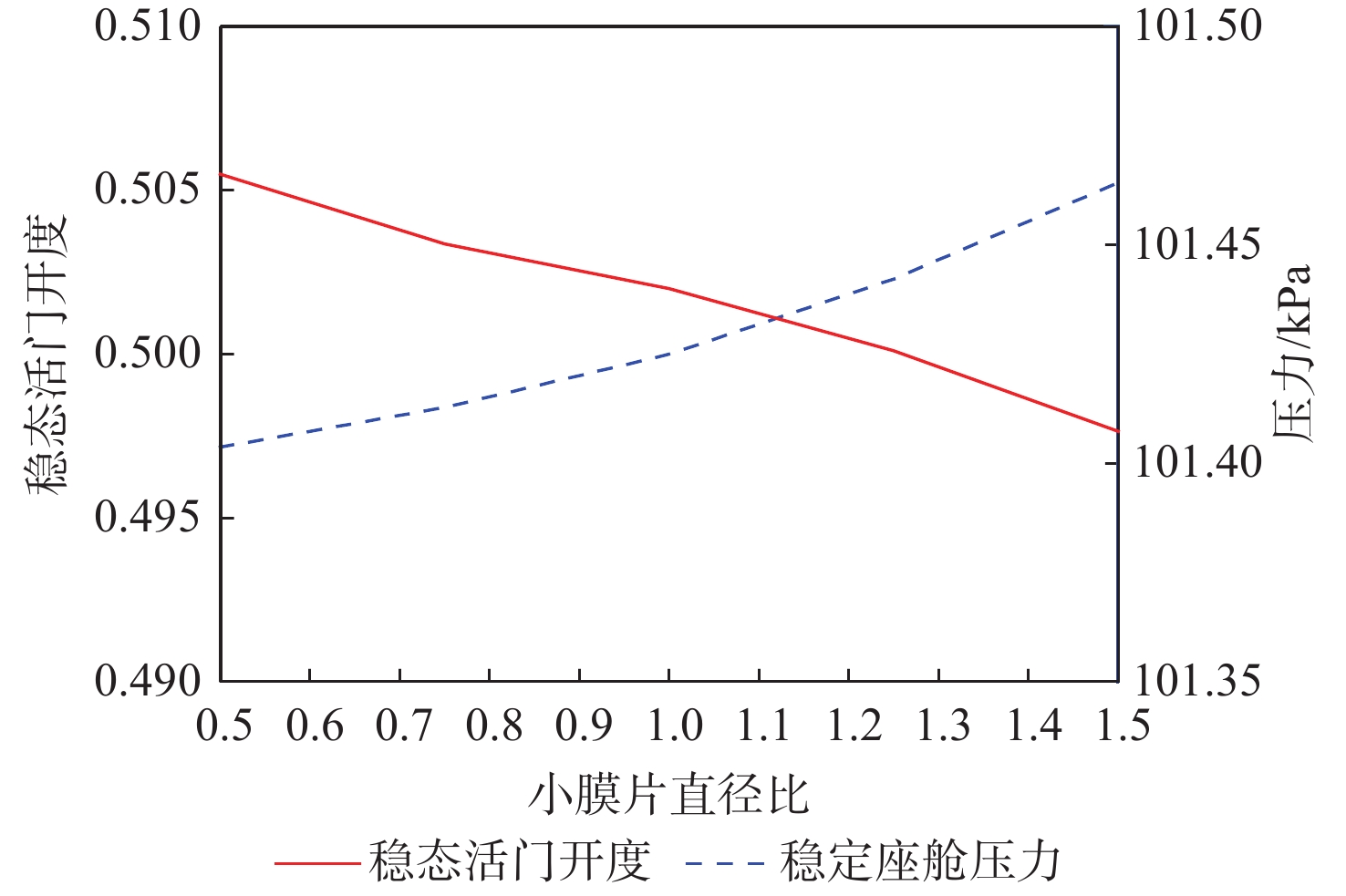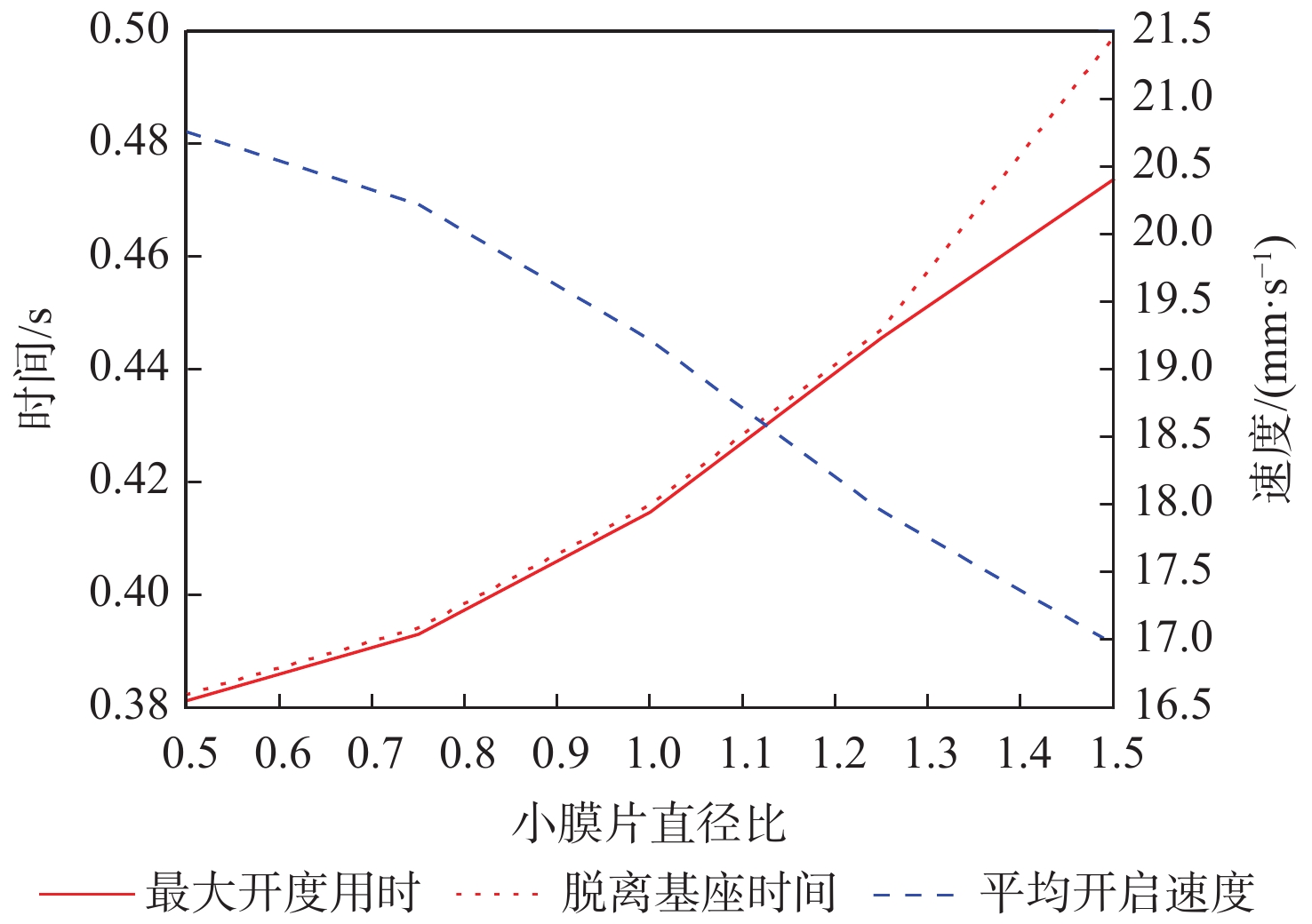-
摘要:
飞机座舱进气流量冲击情况下,气动式座舱压力调节系统(PCPCS)可能由于动态调节速度不足而导致座舱压力尖峰,进而出现“压耳”问题。基于此,对PCPCS的工作原理开展分析,指出小腔可能对排气活门的快速运动产生阻碍。建立PCPCS的动力学模型,描述排气活门中控制腔(A腔)和小腔(B腔)的工作状态;开展PCPCS在座舱进气流量冲击下的动态工作仿真,定量展示排气活门的动态工作特征和活门芯的受力变化;讨论小腔定径孔直径、小腔顶部直径、小膜片直径对排气活门应对座舱进气流量冲击的影响。仿真结果表明:适当增大小腔定径孔直径有助于提升排气活门响应速度,小腔顶部直径对排气活门运动速度没有显著影响,减小小膜片直径对排气活门响应速度的提升较为显著。
-
关键词:
- 飞行器环境控制 /
- 飞机座舱压力调节 /
- 压耳 /
- 气动式座舱压力调节系统 /
- 排气活门
Abstract:Under aircraft cabin inflow impact, the inadequate dynamic regulation speed of the pneumatic cabin pressure control system (PCPCS) may lead to a cabin pressure spike, causing “barotrauma”. Therefore, the working principle of the PCPCS was analyzed, and it was pointed out that the balance chamber may hinder the rapid movement of the outflow valve. A dynamic model of the PCPCS was established. The working states of the control chamber (A chamber) and the balance chamber (B chamber) in the outflow valve were described. The dynamic simulation of the PCPCS under cabin inflow impact was carried out. The dynamic working characteristics of the outflow valve and the force changes of the poppet were quantitatively displayed. The effects of the metering hole diameter of the balance chamber, the top diameter of the balance chamber, and the diameter of the balance diaphragm on the outflow valve’s response to cabin inflow impact were discussed. The simulation results show that appropriately increasing the metering hole size of the balance chamber can help to improve the response speed of the valve; the top diameter of the balance chamber has no significant effect on the movement speed of the outflow valve, and reducing the area of the balance diaphragm improves the response speed of the outflow valve significantly.
-
-
[1] 寿荣中, 何慧姗. 飞行器环境控制[M]. 北京: 北京航空航天大学出版社, 2004.SHOU R Z, HE H S. Spacecraft optimal control theory and method[M]. Beijing: Beihang University Press, 2004(in Chinese). [2] FISCHER R A. Pneumatic valve: US2672085A[P]. 1954-03-16. [3] JENSEN R W. Safety valve: US2672086A[P]. 1954-03-16. [4] FISCHER R A, KEMPER J M. Dual differential pressure regulating control: US2900890A[P]. 1959-08-25. [5] FISCHER R A. Pressure regulating mechanism: US2986990A[P]. 1961-06-06. [6] BURGESS G A, TAYLOR P J. Pressure control system: US3974752A[P]. 1976-08-17. [7] MAAS B N. Pressure regulating mechanism: US2883920A[P]. 1959-04-28. [8] JR ANDRESEN J H. Aircraft cabin pressurization system having controlled rate of pressure change: US3450020A[P]. 1969-06-17. [9] TAYLOR P J. Cabin pressure control systems for general aviation aircraft[J]. SAE Transactions, 1980, 89: 2124-2135. [10] 孙丽蓉, 郑丽, 李钧. 民机座舱负压差安全释压功能试飞研究[J]. 民用飞机设计与研究, 2019(1): 49-52.SUN L R, ZHENG L, LI J. Research on cabin negative differential pressure relief test of civil aircraft[J]. Civil Aircraft Design & Research, 2019(1): 49-52(in Chinese). [11] WHITNEY T J, LUI T L. Aircraft cabin multi-differential pressure control system: US7066808[P]. 2006-06-27. [12] HORNER D, ARTHURS T R, ARMSTRONG B. Poppet valve for cabin pressure control systems: US8382035[P]. 2013-02-26. [13] Aeronautics-Guide. Control of cabin pressure-aircraft pressurization systems (Part 3) [EB/OL]. (2017-05-01) [2023-05-11]. https://www.aircraftsystemstech.com/2017/05/control-of-aircraft-cabin-pressure.html. [14] 北京航空学院五零五教研室. 座舱压力调节器原理[M]. 北京: 北京航空学院五〇五教研室, 1974.Teaching and Research Office of Beijing Institute of Aeronautics and Astronautics. Principle of cabin pressure regulator[M]. Beijing: 505 Teaching and Research Office of Beijing Institute of Aeronautics and Astronautics, 1974(in Chinese). [15] 王浚, 徐杨禾. 飞机座舱空气参数控制[M]. 北京: 国防工业出版社, 1980.WANG J, XU Y H. Aircraft cabin air parameter control[M]. Beijing: National Defense Industry Press, 1980(in Chinese). [16] 徐扬禾, 孙长祝, 朱东明. 带放大器的气动式座舱压力调节器动态特性计算和分析[J]. 北京航空学院学报, 1983, 9(3): 41-49.XU Y H, SUN C Z, ZHU D M. Calculatio and analysis of the dynamic characteristic for pneumatic cabin pressure regulator with an amplifier[J]. Journal of Beijing University of Aeronautics and Astronautics, 1983, 9(3): 41-49(in Chinese). [17] 成杰, 董鹏生. 两种座舱压力控制系统的对比分析[J]. 飞机工程, 2005(4): 42-44.CHENG J, DONG P S. The comparison and analysis of two cabin pressure control system[J]. Aircraft Engineering, 2005(4): 42-44(in Chinese). [18] 霍昱旭, 李玉忍, 宋颖慧. 飞机座舱压力气动调节系统的建模与仿真[J]. 计算机仿真, 2014, 31(1): 36-40. doi: 10.3969/j.issn.1006-9348.2014.01.009HUO Y X, LI Y R, SONG Y H. Modeling and simulation of aircraft cabin pressure’s pneumatic regulator system[J]. Computer Simulation, 2014, 31(1): 36-40(in Chinese). doi: 10.3969/j.issn.1006-9348.2014.01.009 [19] 魏晓永. 飞机座舱压力调节系统仿真研究[D]. 南京: 南京航空航天大学, 2012.WEI X Y. Research on key technologies and optimal design of pneumatic cabin pressure regulation system[D]. Nanjing: Nanjing University of Aeronautics and Astronautics, 2012(in Chinese). [20] 郑新华. 气动式座舱压力调节系统关键技术研究与优化设计[D]: 西安: 西北工业大学, 2016.ZHENG X H. Key technology and optimization of pneumatic cabin pressure regulating system[D]. Xi’an: Northwestern Polytechnical University, 2016(in Chinese). [21] ZHENG Y G, LIU M, ZHUANG J J, et al. A more precise modeling method for pneumatic cabin pressure control system considering the ambient environmental impacts[J]. International Journal of Aerospace Engineering, 2022, 2022: 2109994. [22] BEAR S H. Sinus symptoms originating from modern flight[J]. The Laryngoscope, 1958, 68(6): 1057-1068. doi: 10.1288/00005537-195806000-00008 [23] 朱治平, 于庆祥, 郜德成, 等. 模拟座舱压力变化对中耳影响的研究[J]. 航天医学与医学工程, 1989, 2(1): 30-35,75-76.ZHU Z P, YU Q X, GAO D C, et al. Effects of simulated gabin pressure change on the middle ear in human[J]. Space Medicine & Medical Engineering, 1989, 2(1): 30-35,75-76(in Chinese). [24] VALERIE I. A fix is coming for a problem that left two F-35 pilots in ‘excruciating’ pain[EB/OL]. (2019-06-12) [2023-05-11]. https://www.defensenews.com/air/2019/06/12/a-fix-is-coming-for-a-problem-that-left-two-f-35-pilots-in-excruciating-pain/. [25] 刘剑飞, 王伟. 飞机座舱压力调节系统推油门“压耳” 故障原因及解决措施研究[J]. 河南科技, 2019, 38(1): 92-95.LIU J F, WANG W. Solution and research of push throttle pressure ear fault in cabin pressure regulating system[J]. Henan Science and Technology, 2019, 38(1): 92-95(in Chinese). [26] MEGAN E. Navy rules out suspected physiological episodes cause while super hornet rates grow in 2019[EB/OL]. (2019-04-04) [2023-05-11]. https://news.usni.org/2019/04/04/navy-rules-out-contamination-as-physiological-episodes-cause-focused-on-air-pre-ssure-as-super-hornet-rates-still-high. [27] 胡正元, 史秀凤, 范静平. 不同增压速率所引起的耳气压伤特征[J]. 声学技术, 2004, 23(1): 25-28. doi: 10.3969/j.issn.1000-3630.2004.01.007HU Z Y, SHI X F, FAN J P. Characteristics of aural barotrauma caused by different compression rate[J]. Technical Acoustics, 2004, 23(1): 25-28(in Chinese). doi: 10.3969/j.issn.1000-3630.2004.01.007 [28] CHAURASIYA K L, BHATTACHARYA B, VARMA A K, et al. Dynamic modeling of a cabin pressure control system[J]. Proceedings of the Institution of Mechanical Engineers, Part G: Journal of Aerospace Engineering, 2020, 234(2): 401-415. doi: 10.1177/0954410019867578 [29] 廉乐明, 谭羽非, 吴家正, 等. 工程热力学[M]. 5版. 北京: 中国建筑工业出版社, 2007.LIAN L M, TAN Y F, WU J Z, et al. Engineering thermodynamics[M]. 5th ed. Beijing: China Architecture & Building Press, 2007(in Chinese). [30] 崔超群. 针对座舱压力增长率的分析与研究[J]. 中国科技纵横, 2013(20): 183-184.CUI C Q. Analysis and research on the growth rate of cabin pre-ssure[J]. China Science & Technology Overview, 2013(20): 183-184(in Chinese). -







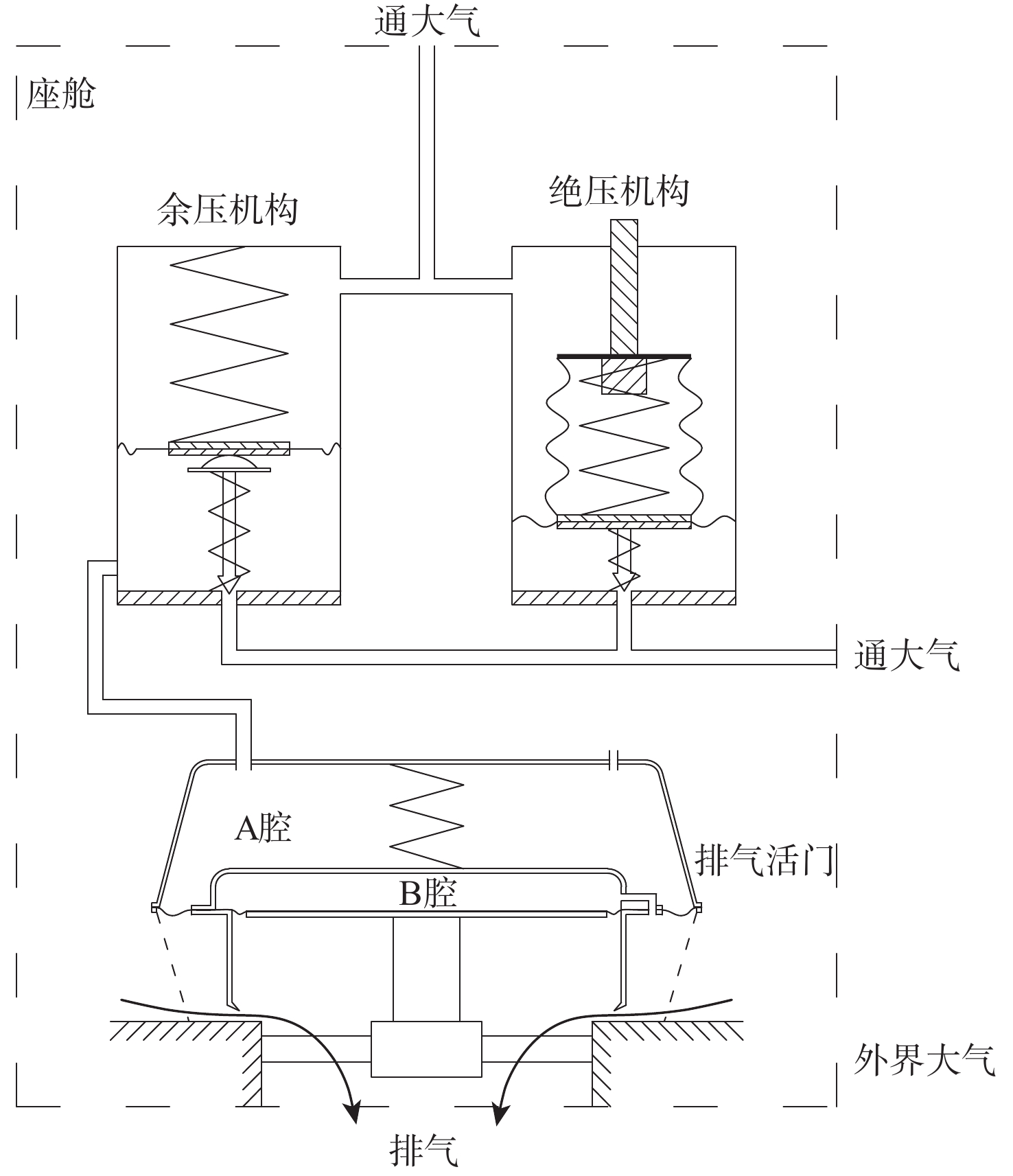
 下载:
下载:

